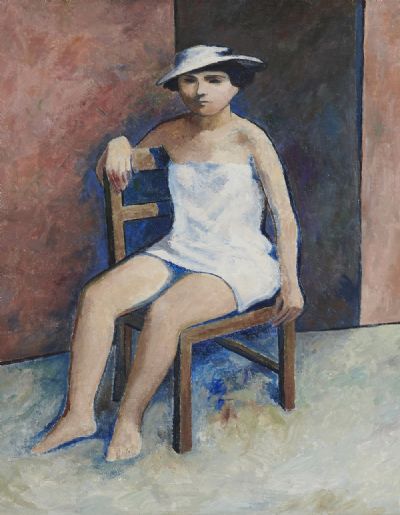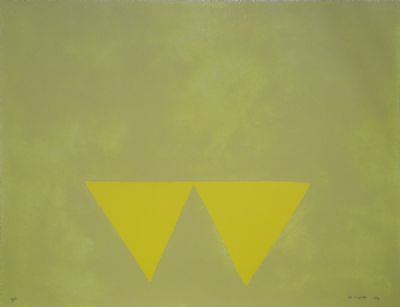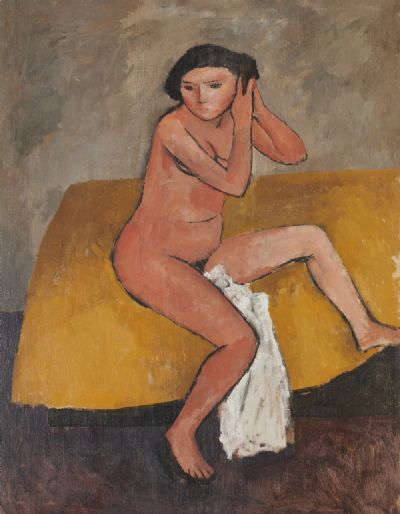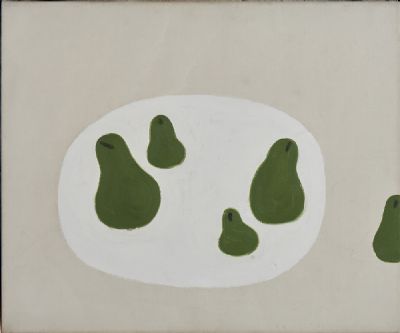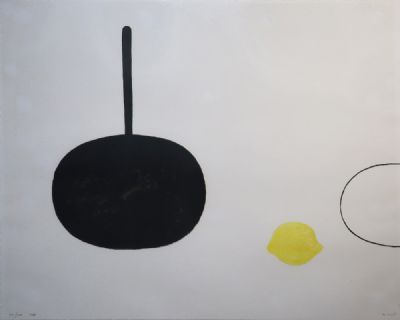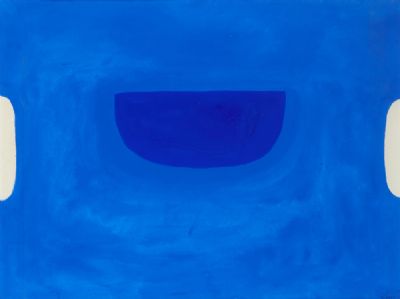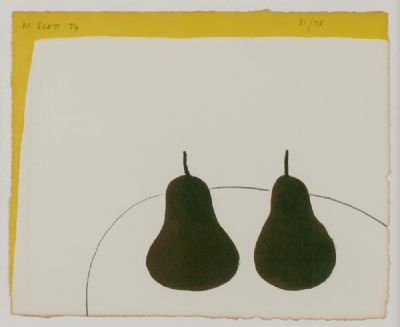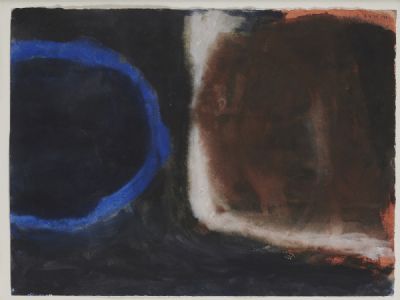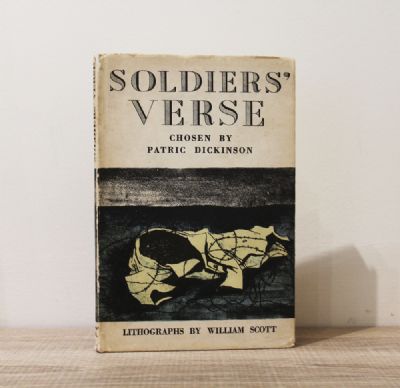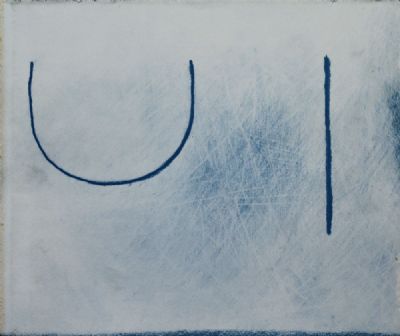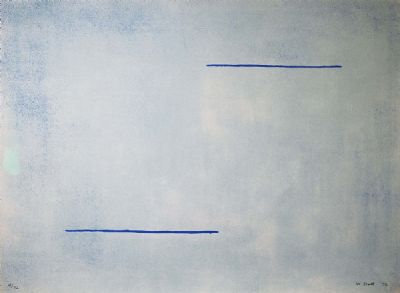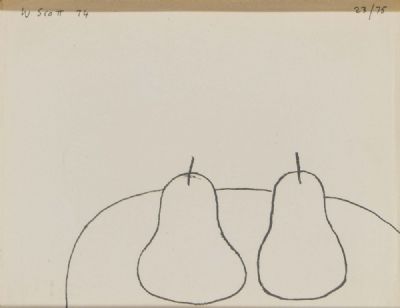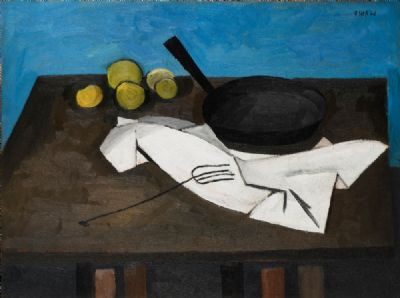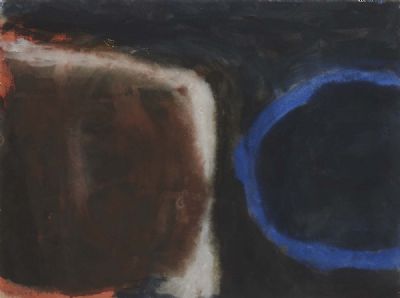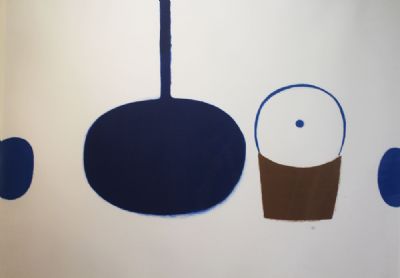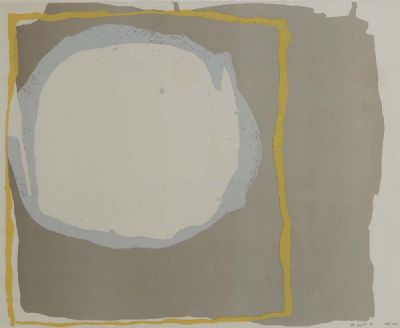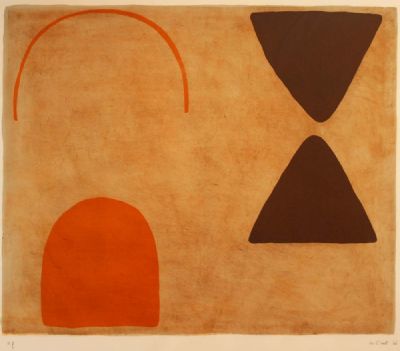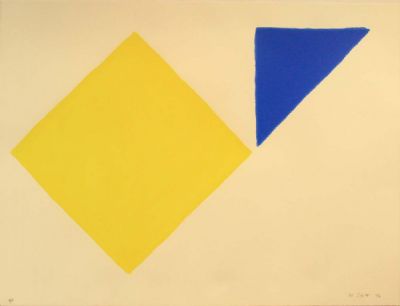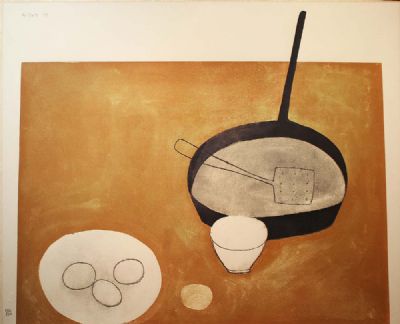William Scott
William Scott was born in Scotland and raised for the most part in Northern Ireland. He studied art at Belfast College of Art 1928-1931 and then at Royal Academy Schools in London 1931 -1935. In 1937 Scott spent time in Italy before settling at Pont-Aven in France until the outbreak of World War II forced him to return to London and join the British army 1942-1946. Following the end of the war, Scott returned to painting and developed his style, representative of his work today, namely the simple still lives of pots and pans, eggs, fish and bottles. These objects provided interesting spatial geometry set against the muted background. By 1951 the banal domestic objects became metaphors of erotic encounters between men and women. Following a visit to USA in 1953 having met Jackson Pollock, Elaine de Kooning and Mark Rothco and been exposed to abstract expressionism, his later paintings take on this idiom. His works have a disquieting atmosphere to them, a sense of separation reflective of the political context created by the threat posed by WW2 to society and life as it was known to that point. The formal spatial question in his works is significant as it combines with the minimalist form, colour and choice of subject to create a tension almost palpable to the viewer.
His original representation was made in London where he spent the majority of his adult life. He exhibited widely during his lifetime, most notably at the Venice Biennale in 1958, the Tate Gallery, 1972, and in 1986 at the Ulster Museum in Belfast, touring to the Guinness Hopstore, Dublin, and the Scottish National Gallery of Modern Art.
Read More
His original representation was made in London where he spent the majority of his adult life. He exhibited widely during his lifetime, most notably at the Venice Biennale in 1958, the Tate Gallery, 1972, and in 1986 at the Ulster Museum in Belfast, touring to the Guinness Hopstore, Dublin, and the Scottish National Gallery of Modern Art.
Read More

